Picture this: you step into your garden on a beautiful morning, coffee in hand, only to find that your once vibrant and thriving hydrangeas have been ravaged by deer overnight. The lush blooms you've meticulously nurtured are now mere shadows of their former glory.
Don't let this become your reality! In this blog post, we'll dive into the question, “do deer eat hydrangeas?”, explore why deer are attracted to hydrangeas, discuss some deer-resistant hydrangea varieties, and provide practical tips for protecting your beloved plants from these persistent grazers.
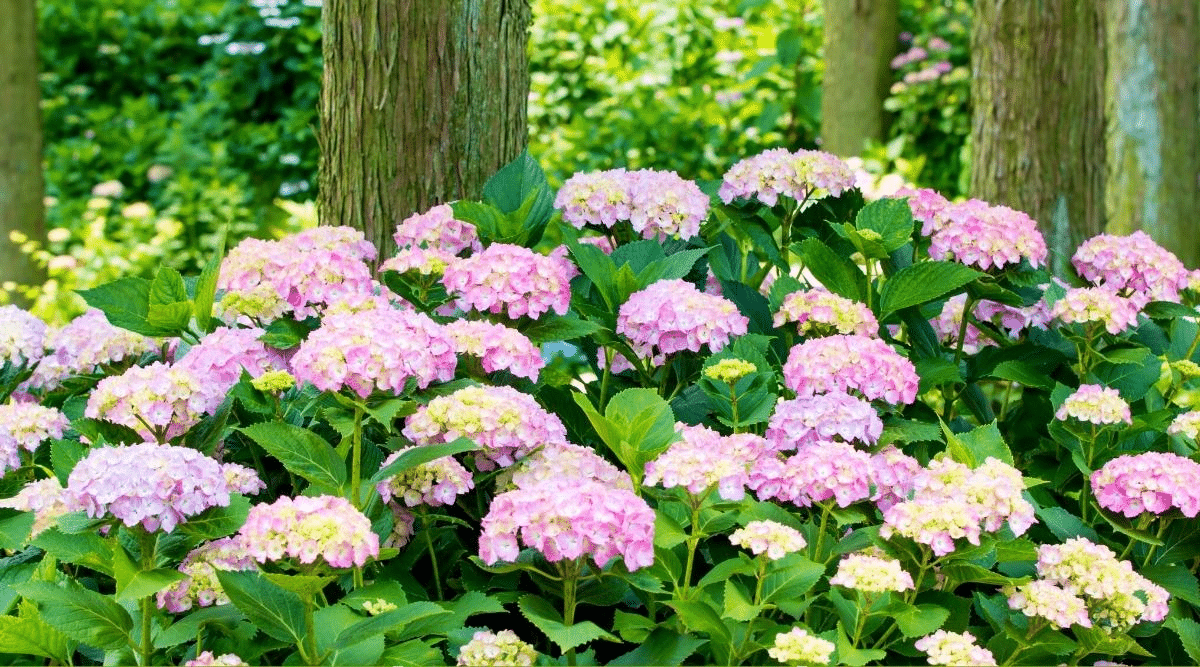
While hydrangeas are undeniably beautiful and versatile additions to any garden, they're unfortunately not deer-resistant. In fact, deer often find hydrangeas irresistible, making them prime targets for late night snacking.
To help you protect your hydrangeas and maintain their stunning beauty, we'll discuss the reality of “do deer eat hydrangeas?”, the factors that attract deer, and the best methods for safeguarding your plants.
Short Summary
Hydrangeas can be attractive to deer due to a lack of deterrent characteristics.
Implementing physical barriers, repellent sprays and companion planting with deer-resistant plants are effective methods for protecting hydrangeas from damage.
Taking preventative measures such as fencing, commercial repellents and electric fences can help reduce the risk of future problems in gardens.
Deer and Hydrangeas: The Reality

Deer are drawn to hydrangeas for a variety of reasons, including their availability, smooth texture, sugar content, and sweet fragrance. They don't discriminate when it comes to the parts of the hydrangea plant they consume, as they happily munch on leaves, flowers, stems, and plants alike. While some hydrangea varieties are more deer-resistant than others, none are entirely immune to the allure of these beautiful shrubs.
One might wonder, are there any hydrangeas that deer are less likely to devour? The answer lies in the different hydrangea varieties.
While deer happily feast on oakleaf hydrangeas when they bloom, they tend to show less interest in smooth hydrangeas. This could be due to the fact that smooth hydrangeas, native to the southeastern United States, are a more common sight for deer, making them less attractive compared to the other varieties.
Deer Attraction Factors
As we delve further into the factors that attract deer to hydrangeas, it's important to note that deer tend to avoid plants with fuzzy foliage, spikes, fragrant foliage, and ornamental grasses.
So, what sets hydrangeas apart? Smooth hydrangeas, for instance, have fuzzy leaves that deter deer, making them less preferred meals for these creatures. However, other hydrangea varieties lack these deterrents, making them more attractive to deer.
In contrast, plants like lavender, yarrow, and boxwood are known to be deer-resistant. These plants possess the characteristics that deer tend to avoid, such as fuzzy or fragrant foliage.
While it may not be possible to eliminate deer completely from your garden, understanding the factors that draw them to hydrangeas can help inform your preventative and protective measures.
Deer-Resistant Hydrangea Varieties
While no hydrangea variety is completely deer-proof, some are more resistant than others. For example, bigleaf hydrangeas possess a resistance to deer due to their fuzzy and thorny leaves and late blooming season.
On the other hand, oakleaf hydrangeas are highly attractive to deer, thanks to their large columnar flowers that bloom in mid-spring.
Unfortunately, not all hydrangea varieties share the same level of deer resistance. Panicle hydrangeas have very little resistance against deer. In fact, they are not deer-resistant at all.
Knowing which hydrangea varieties are more resistant to deer can help you make informed decisions when planning your garden and selecting the appropriate plants.
Tips for Protecting Your Hydrangeas from Deer

In order to protect your hydrangeas from deer, it's crucial to implement a combination of protective measures. These can include physical barriers, deer repellent sprays, and companion planting with deer-resistant plants.
In the following sections, we'll explore each of these methods in more detail.
Physical Barriers
Physical barriers are structures or objects designed to protect plants from deer, and they come in various forms. Fences, nets, chicken wire, polypropylene mesh fencing, and metal wire fencing are all viable options for protecting your precious hydrangeas. These barriers can effectively deter deer from accessing your hydrangeas and other vegetation while also providing privacy and visual appeal.
When choosing a physical barrier, consider the size of your garden, the height of the barrier needed to keep deer out, and the aesthetics of the barrier. For instance, chicken wire might be a cost-effective and practical choice for a small garden, while a taller wooden fence may be more suitable for a larger garden with a higher deer population.
No matter the chosen barrier, it's essential to ensure that it's sturdy and properly installed to provide maximum protection for your hydrangeas.
Deer Repellent Sprays
Deer repellent sprays are another effective method for protecting your hydrangeas from deer. These sprays typically contain ingredients such as garlic, putrified eggs, dried blood, capsaicin, and wintergreen oil, which deter deer from munching on your plants. Bobbex, Plantskydd and Liquid Fence are common commercial deer repellent sprays. They help protect plants from animals such as deer.
When applying deer repellent sprays, it's essential to follow the manufacturer's instructions and spray on a mid-morning day when the dew has dissipated, leaves are dry, and the temperature is above freezing. Alternatively, you can create your own homemade deer repellent spray using essential oils like rosemary and peppermint.
Remember to reapply the repellent regularly, especially after rainy days, to maintain its effectiveness.
Companion Planting
Companion planting involves growing deer-resistant plants alongside your hydrangeas to help deter deer from your garden. By incorporating plants that deer tend to avoid, such as those with fuzzy or fragrant foliage, you can create a natural barrier that encourages deer to forage elsewhere.
This method not only helps protect your hydrangeas, but can also enhance the overall aesthetic and biodiversity of your garden.
Recognizing Deer Damage on Hydrangeas
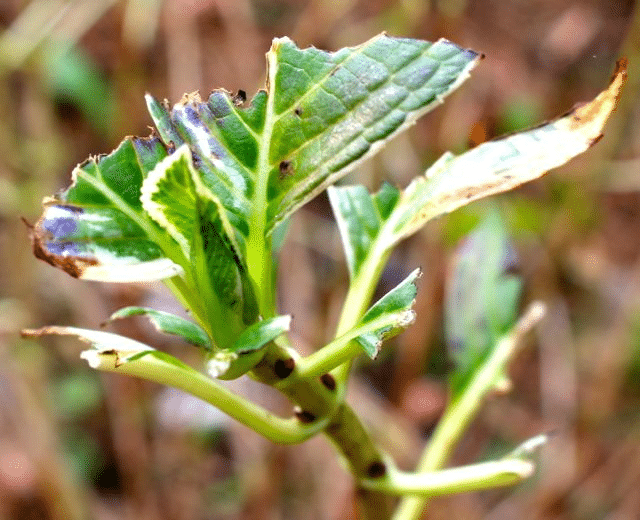
When it comes to recognizing deer damage on your hydrangeas, there are several telltale signs to look for. Deer typically leave bite marks on the leaves, stems, and buds of the plant, often resulting in cut edges and a ragged appearance.
In addition, you might notice hoof prints around the base of your hydrangeas, indicating that deer have been in the vicinity.
Being able to recognize deer damage on your hydrangeas is crucial for taking appropriate action to protect your plants. The sooner you identify the signs of deer damage, the quicker you can implement protective measures and help your hydrangeas recover.
Strategies for Recovery After Deer Damage

If you've discovered deer damage on your hydrangeas, don't despair! Hydrangeas are known for their resilience and will often bounce back even after being consumed by deer. This is particularly true for more mature hydrangeas, which have a greater capacity for resilience and can usually recover more robustly than younger plants.
To help your hydrangeas recover after deer damage, consider implementing strategies such as pruning damaged areas, fertilizing the plants to promote new growth, and mulching around the base of the plant to retain moisture and suppress weeds. With proper care and attention, your hydrangeas can regain their former beauty and continue to grace your garden with their stunning blooms.
Alternative Hydrangea Cultivars for Deer-Prone Areas
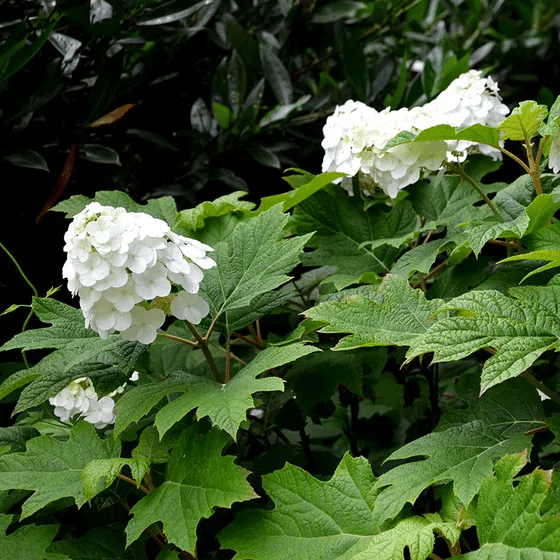
If you live in an area with a high deer population, it may be beneficial to consider alternative hydrangea cultivars that are better suited for deer-prone areas.
Climbing hydrangeas and oakleaf hydrangeas are two such options, although it's important to protect young climbing hydrangea plants with chicken wire or another barrier until they're large enough to withstand occasional grazing.
Bigleaf hydrangeas and limelight hydrangeas also make excellent alternatives for deer-prone areas. By choosing hydrangea cultivars that are less attractive to deer, you can minimize the risk of damage and enjoy a more peaceful coexistence with your local deer population.
Preventative Measures for Future Deer Problems
Best Price on Bobbex Deer Repellent Spray
To prevent future deer problems in your garden, consider adopting an integrated pest management approach. This involves planting deer-resistant plants, using scare devices and repellents, and installing fencing to exclude deer. You can also create homemade smelly sprays and apply them regularly near your hydrangea bushes, particularly after rainy days.
Commercial repellents and electric fences are other effective preventative measures to consider. By taking a proactive approach to deer management and implementing a combination of the strategies outlined in this blog post, you can safeguard your hydrangeas and maintain their stunning beauty for years to come.
Summary
In conclusion, while hydrangeas are undeniably beautiful additions to any garden, they're unfortunately not immune to the persistent grazing of deer.
However, by understanding the factors that attract deer to hydrangeas and implementing protective measures such as physical barriers, repellent sprays, and companion planting, you can minimize the risk of deer damage and keep your hydrangeas healthy and vibrant.
Remember that prevention is key when it comes to protecting your hydrangeas from deer. By taking proactive steps and adopting a combination of the strategies outlined in this blog post, you can enjoy the stunning beauty of your hydrangeas without the constant worry of deer damage. So, let's raise a toast to your thriving hydrangeas and the peaceful coexistence with your local deer population!
Frequently Asked Questions
What kind of hydrangeas do deer not eat?
It seems that deer do not prefer bracted hydrangea, as its soft and fuzzy leaves make it unappealing. Thus, this plant may be the best choice if one is looking to deter deer away from their garden.
While adding a unique beauty with cultivars such as ‘Blue Bunny', this plant can be a great addition to any garden.
Will hydrangeas grow back if eaten by deer?
Yes, hydrangeas are quite resilient and will most likely grow back, even if they have been eaten by deer. Deer typically only eat the upper parts of these flowers, so as long as the roots are still in the ground, hydrangeas should bounce back quickly.

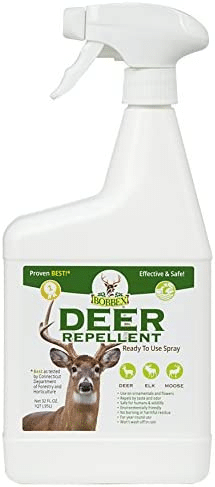
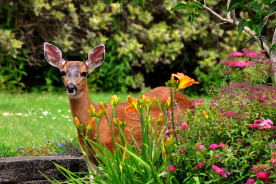

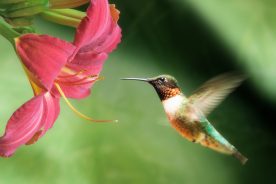

No Comments